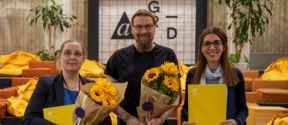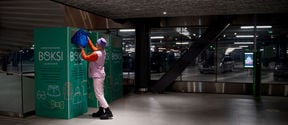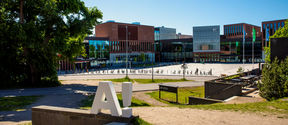Ecofriendly chemicals can actually improve mineral processing
Metals extracted from the Earth’s crust are vital for our everyday products, but their production places a heavy burden on the environment. Once the minerals are excavated, simply processing them requires a slew of chemicals, many of which may pose harm to nature.
Researchers at Aalto University have now developed a way to make this process a little more environmentally friendly. Their cellulose-based compound is not only renewable, biodegradable and non-toxic, but research shows that is also more effective in separating metals than the oil-based commercial frothers currently used.
Rodrigo Serna, a professor at Aalto University who came up with the idea, says that the chemical technology used in froth flotation -- the process through which metals are separated from ores -- has remained relatively unchanged for decades.
’We wanted to find more sustainable alternatives to these chemicals, so we started carefully exploring cellulose derivatives with properties considered suitable for frothers. It was quite surprising when, already in the first laboratory experiments, the new compound started to produce more minerals than traditional methods,’ Serna says.
In the flotation process, air bubbles are created in a mixture of crushed ores, water and various chemicals. The metal-bearing minerals selectively attach to the bubbles, forming a froth on the surface from which they are collected. Frothers are required to control the formation and stability of air bubbles.
Researchers found that the cellulose-based compound has several advantages over the state-of-the-art frothers now in use. It increases the amount of minerals recovered, while accelerating the flotation process, and also works effienctly in wider range of pH conditions, making it less sensitive to the changes in process conditions. In some cases, like for zinc materials, the compound also helps reduce the need for chemicals in other aspects of processing, as well.
Mineral reserves are depleting
This work builds on the researchers’ past findings -- published in, for example, the Journal of Cleaner Production -- which tested the technology in laboratory with minerals containing copper and zinc, and in continuous operation at a mini-plant with ores containing copper. It has also been tested for the recovery of copper from waste streams, including mineral tailings and waste slag from metal refineries. Researchers are currently experimenting the technology with minerals containing gold.
The team has applied for a patent for the technology under the name of CellFroth, and the next step is to investigate commercialization possibilities. On an industrial scale, the new technology would offer a higher production capacity in mineral processing plants and reduce the use of other chemicals. It can also handle waste streams with low contents of valuable minerals. In the future, as mineral resources deplete, the mineral processing industry must process larger amounts of low-quality ores to keep up with demand.
’The mining industry is under great pressure to develop more environmentally friendly practices. At the same time, they need to improve their productivity as the need for raw materials increases and the mineral reserves become depleted. These don’t have to conflict with each other,’ Rodrigo Serna says.
Research articles in Aalto Research portal
The project has received funding from Business Finland's Research to Business (formerly TUTLI) program.
More information
Read also:
Get to know us: Assistant professor Rodrigo Serna
Assistant professor Rodrigo Serna’s goal is to find new ways to produce sufficient raw materials for our modern society. Let’s hear more!

- Published:
- Updated:
Read more news

Aalto Open Science Award ceremony brought together Aaltonians to discuss open science
Last week we gathered at A Grid to celebrate the awardees of the Aalto Open Science Award 2023 and discuss open science matters with the Aalto community.
Seed funding available to boost collaboration between Aalto, KU Leuven and University of Helsinki
Aalto University, KU Leuven and the University of Helsinki launch the 2nd exploratory seed funding call to explore research collaboration possibilities. The funding call is open until 10 September 2024.
Kierrätyskeskus Boksi donation point now in A Bloc
Boksi is located on the 1st floor of shopping center A Bloc, opposite R-kioski, and is available during the center’s opening hours.